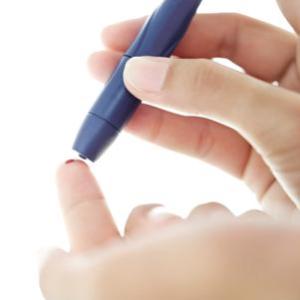New-onset insulin-independent diabetes curing through cell therapy in UCTC
What is new-onset insulin-independent diabetes non-insulin-dependent diabetes mellitus?
This is a condition when the patient is diagnosed with type II diabetes for the first time.
 Newly diagnosed non-insulin-dependent diabetes mellitusmay arrive when person does not expect it. The patient feels good and it is hard to make him change something in his life. In most cases people reveal interest to diabetes only when the complications occur. It happens usually just 5 years later after the diabetes is diagnosed.
Newly diagnosed non-insulin-dependent diabetes mellitusmay arrive when person does not expect it. The patient feels good and it is hard to make him change something in his life. In most cases people reveal interest to diabetes only when the complications occur. It happens usually just 5 years later after the diabetes is diagnosed.
Take into consideration that all patients diagnosed with new-onset insulin-independent diabetes will have complications in the future! And these complications will not only make your life shorter, but will make you suffer much.
There are good news here too: if your blood sugar level is close to normal, then the risk of developing undesirable complications decreases 2 times.
The period, when this condition is discovered, is very important. It was proved that good blood sugar level in the first years of the diabetes decreases the risk of heart attack in the future.
What should one do when type 2 diabetes mellitus is discovered?
People with this disease frequently make the same mistake. They ignore the it in the first years of its development. And only when blood sugar rises considerably and first unpleasant signs appear, the person applies to the doctor. But it can be too late then as there are almost always complications on this stage.
Here is the scheme you should follow in case type 2 diabetes is occured.
- Set the aim to regulate blood sugar in the blood and keep it normal.
- Keep the records where you will write down blood sugar level, cholesterol, blood pressure.
- Take the measurements and write down your weight, waist circumference.Check them up monthly.
- Make electrocardiogram, rheovasography and discuss the results with your endocrinologist.
- Consult the eye specialist to find out if there are no diabetic complications.
- Determine the level of your cholesterol. Lipid profile is also recommended.
- Start losing weight. Make the weight loss plan – 10% within a year or a year and a half. There is no need to do it faster.
- Acquire glucometer and start using the device.
- Buy the device to measure blood sugar. Do it twice a day.
- Read books about this condition and look for all interesting information about it.
- Write down questions connected with diagnosis and ask doctor about the problems that worry you.
- Get ready that you will need insulin treatment in the future.
Stem cell therapy
When stem cell treatment is used for treatment of noninsulin-dependent diabetes mellitus, the following effects are observed:
- Persons diagnosed with this disease experience decrease of glycemia. After stem cell injections the dosage of insulin is slowly reduced. In many cases insulin therapy, conducted in UCTC clinic, is entirely discontinued.
- In the majority of cases the syndrome of early post-transplantation makes the person feels much better and he does not feel fatigue any longer. The patient feels and sleeps better. The appetite is also improved.
The stem cell therapy will take just a couple of days and the results achieved within this short time are really impressive. The best specialists that perform such procedures are at your disposal in UCTC clinic based in Kiev.